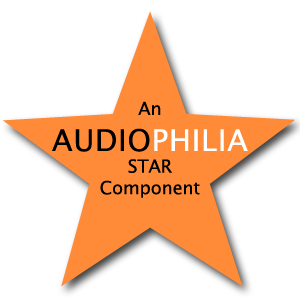The Audio by Van Alstine Vision SET 400 Amplifier
Over the years it’s been my good fortune to have reviewed and/or been exposed to many fine power amplifiers. These ranged from solid state Class A, a variety of tube amplifiers, with and without transformers, to the latest solid state Class D designs. I concluded there is no one right way to achieve excellent sound quality. We all hear differently and we all have our individual preferences. So, it can be difficult to review a product that will make an impact on a field of quality products.
My current reference, a pair of Merrill Audio Veritas Monoblocks, was doing an excellent job and I was happy with them. Michael Levy of Alta Audio called me and was ecstatic in his praise of a relatively inexpensive, new stereo power amplifier by Audio by Van Alstine. Like all passionate audiophiles, Levy is demonstrative in praise and can be equally demonstrative about dislikes. He enthusiastically offered me the amplifier for Audiophilia review.
The official title is the Audio by Van Alstine Vision SET 400 Amplifier (MSRP is $2200) and is as basic looking as can be. Its faceplate is aluminum, about ¼ in thick, with a clear anodized aluminum finish. It is a solid state Class A/B design. The unit has a push button on/off switch with a blue indicator light. That’s it. No flashy meters. No graphs. Just the machine.
Specifications
Rated at 225 watts per channel into 8 ohms and much more into 4 ohms and operates safely into 2 ohms.
Standard configuration includes gold plated machined RCA input jacks, 5-way gold plated speaker jacks, and external speaker fuses.
The Vision SET amplifier is Class A/B, and is biased as Class A at normal listening levels. The SET name stands for the unique Single Ended Transistor voltage amplifier design. Bandwidth is flat from 3Hz to 70KHz.
Eight double-die mosfet output transistors, standard on the SET 400, handle difficult speaker loads (2 Ohm loads and up).
The SET 400 has an oversized high capacity toroid power transformer that is voltage regulated.
The SET 400 operates with standard 120 Volt power, has an IEC power jack, and includes a polarized 120V power cord.
Dimensions: 17" wide, 13" deep, 7" high.
Shipping weight is 38 pounds.
Sound
As brief a description that I’ve given of the physical nature of the amplifier, the opposite will be true of the sonic picture this amplifier presents.
My initial impression out of the box was a big wow! I was perplexed. How could an inexpensive, one-box stereo amplifier sound better than a very highly regarded pair of monoblocks costing six times the price? I know the money and design was on the inside, but the sounds I was hearing reflected a superior design, with effortless dynamics and an ease of delivery associated with the best in solid state design.
I burned in the unit for the suggested 200 hours. There was an increase in detail with an even more sense of reserve power. The images were vivid and three dimensional. This increase in detail, if improperly done, can result in an artificial sonic signature. While initially exciting, the sound can often become fatiguing and eventually ruin the performance. Not the SET 400. It provides inner detail and texture in a natural way—the sound, while very defined is also musical without calling attention to itself.
There is a sense of three dimensional space that makes its presence known. You hear it and feel it. The sound is instructive in highlighting some amplifiers’ weakness of two dimensional sound. As such, there are other manufacturers producing amps with excellent sonic characteristics, including imaging that’s precise with life-size sound staging, accurate and well balanced frequency response, but are not able to re-create three dimensional space bringing us closer to ‘live’ sound.
How an amplifier handles dynamics goes a long way in achieving that feeling of ‘live’. Does it provide the explosiveness required by a Count Basie band or Ellington orchestra, playing balls to the wall, unrestrained recordings of these big band giants. The SET 400 does just that. And the subtleties of the music are captured with the same completeness whether an instrument is in the foreground, soloing or in the background playing accompaniment. No matter the position, the SET 400 provides a complete sonic picture of the instrument. No guesses whether it’s an alto or tenor sax.
An area where I was satisfied with my Merrill monos was the bass performance—strong, detailed and dynamic. Yet, when I switched to the SET 400 it became immediately obvious that a new sheriff was in town. The SET 400 gave me bass that was even more defined, more powerful, and more accurate. By more accurate I mean it not only provided a more solid foundation but allowed the listener to more easily determine the kind of bass being used, string or electric, amplified or not. Picking up on the fingering was especially satisfying but the rich textures of Ray Brown’s upright bass were more than ‘soul’ satisfying. I felt it as the sound migrated up through my feet—it got my body moving.
Conclusion
I’d like to say that Frank Van Alstine has completely obliterated the established price/performance structure with the introduction of his superb amplifier, the SET 400. If I had heard this amp and was told it cost 10K plus, I would not have been surprised. Its performance would easily merit that kind of price. It’s almost embarrassing to realize this level of performance can be had for the cost of a power cord. I unequivocally recommend the SET 400 amplifier and I will be using it as reference in my system.
Further information: Audio by Van Alstine




